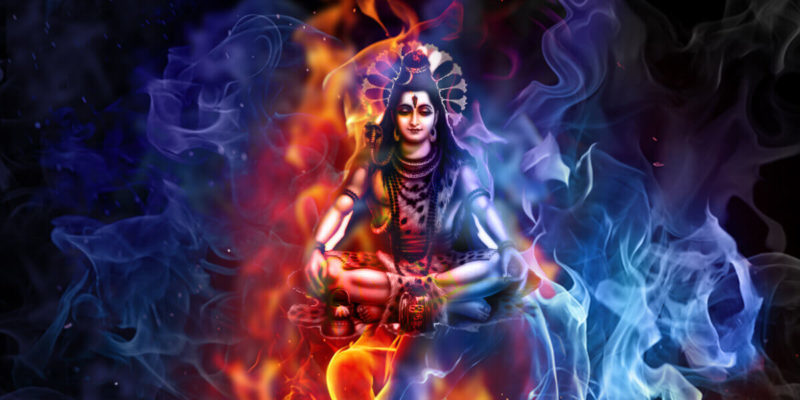Maha Shivratri 2021 – Date, Vrat & Puja
The term Maha Shivaratri means ‘the great night of Shiva’. It is an annual Hindu festival dedicated to Lord Shiva. Hindus all over the world observe this festival with great devotion. Visiting Shiva temples, offering special prayers and poojas, continuous chanting of ‘Om Namah Shivaya’, and staying awake at night are the standard practices followed on the occasion of Maha Shivaratri. It is a holiday in India, Nepal, and Mauritius.
Maha Shivratri is observed on the fourteenth night of the dark fortnight in the Hindu lunar month Falgun or Magha. It usually falls in February or March in the Gregorian calendar.
When is Maha Shivratri 2021?
Maha Shivratri Date (2021 Maha Shivaratri) – March 11, 2021, Thursday.
Maha Shivratri is celebrated on the Krishna paksha Chaturdashi (14th day of the waning phase) of the Hindu month Falgun or Magha. In the North Indian Panchang (Purnimant Panchang), it is the month Falgun and, in the South Indian Panchang (Amavasyant Panchang), it is the month of Magha. In both of these systems, Maha Shivratri occurs on the same day and, hence, the date in the Gregorian Calendar remains the same for the entire India.
2021 Maha Shivaratri Puja Timings:
Nishita Kaal Puja Time : 24:06:41 to 24:55:14
Duration : 0 Hour 48 Minute
Maha Shivaratri 2021 Parana Time : 06:36:06 to 15:04:32 on 12th March

Vrat (Fasting) on 2021 Maha Shivaratri
The 14thday of every lunar month (the day before the new moon) is considered as Shivaratri. But, the one befalling on the Krishna paksha Chaturdasi (14th day of the waning phase) of Falgun/Magha month has the highest spiritual significance and is observed as Maha Shivratri. It is believed that, on the night of this auspicious occasion, the northern hemisphere of the Earth positions in a way that causes a natural upsurge of energy in us.
On Maha Shivratri 2021, those wishing to observe vrat and staying up for a vigil at night should go through the following rules based on the scriptures.
- If the entire Nishithkaal (eighth Muhurat of the night) comes under Chaturdashi Tithi on the very first day, Maha Shivratri is celebrated on the same day.
- If Chaturdashi Tithi touches the first part of the Nishithkaal of the second day but, the entire Nishith Kaal of the first day comes under Chaturdashi Tithi, then Mahashivratri is on the first day.
- Apart from the cases mentioned above, the vrat has to be observed on the second day.
Pradosh Vrat 2021 Dates – Benefits & Rituals
Maha Shivratri Puja, Vrat & other observances
The Maha Shivaratri observances include poojas, abhisheka, fasting, and staying awake at night with prayers and meditations. Devotees observe fast on this day and keep awake all night, meditating or chanting prayers inside the temples. Some devotees observe strict fasting without even consuming water. Some people have food only once, while some follow a fruit and milk diet. Devotees visiting Shiva temples give prayers, special pujas & offerings. Those who wish to stay awake may visit the temples and spend their night, chanting prayers or ‘Om Namah Shivaya’ mantra. Some devotees chant the Maha Mrityunjaya Mantra too. 
Abhisheka on Shivalinga is a significant ritual on Maha Shivaratri. It is done using milk, honey, sugar, butter, black sesame seeds, Ganga Jal, etc. After the abhisheka or bathing of Shiva Linga, sandalwood paste and rice are applied, and fresh fruits and flowers are offered. According to Shiva Purana, all these observations have specific meanings.
- Bathing Shivalinga with water, milk, honey and betel leaves marks purification of the soul.
- Applying vermillion or kumkum symbolizes virtue.
- Offering fruits indicates longevity and gratification of desires.
- The burning of incense symbolizes wealth.
- The lighting of lamps indicates the attainment of knowledge.
- Betel leaves signify satisfaction with worldly pleasures.
Maha Shivratri Legends
Some legends associated with Maha Shivratri are the following.
-One such legend is that Maha Shivratri is the night when Lord Shiva performed the Tandava Nritya – the cosmic dance of primordial creation, destruction, and preservation.
-Another one is that it is the occasion in which Shiva-Shakthi convergence or the marriage of Lord Shiva with Goddes Parvati happened.
-Another legend, as per the Hindu scholars, is that it is the occasion in which Shiva saved the world by consuming the poisonous negativity and arresting it in his throat.
-For some believers, it is the occasion in which Shiva manifested his great effulgent form – Jotirmaya or Jyotirlinga to Lord Vishnu and Lord Brahma.
Get your FREE 60-page Kundli
What are the astrological benefits of observing Shivaratri Vrat?
The Krishnapaksha Chaturdashis or the fourteenth day of dark fortnights are considered as Shivratri. Shiva is regarded as the lord of Chaturdashi Tithi. In astrology classics, this day is essential. As per astrology, Moon is the significator of the mind, and it gets weaker on this day. Since Lord Shiva has established the Moon over his forehead, worshipping him empowers the Moon of the worshipper (in the birth chart). It gives the worshipper mental strength, will-power, courage, and toughness.
Significance of Maha Shivratri 2021
Most of the Hindu festivals are either the commemoration of some victories or the celebration of agricultural events such as sowing and harvesting. But Maha Shivaratri is a festival with some difference. Its importance varies with perceptions. The significances of Maha Shivratri include the following:
-On Maha Shivratri, those who strictly observe fasting and other penances are believed to achieve Moksha or liberation.
-On this occasion, the religious practices, including Yoga and meditation, work more effectively and the benefits of mantras, such as Maha Mrityunjaya Mantra, increase.
-The material pleasures and temptations are forces that bother humans a lot. Maha Shivratri puja, vrat & fast are so powerful that they help a person attain control over worldly pleasures and temptations.
-By worshipping Shiva and observing the fast for the entire Shivratri night, one can have control over negative thoughts like anger, lust, greed etc.
-On Maha Shivaratri, the Universe pushes us towards the spiritual peak; the planetary positions evoke the spiritual energies that help us rise to that level. The tradition of observing the festival night-long and staying awake is to allow this flow of energy to pass through our spine.
Get your monthly horoscope FREE
Maha Shivratri – A Celebration of Emptiness/Darkness
As mentioned above, the 14th night of the waning phase in each month is Shivaratri, and Maha Shivaratri is the one with the highest significance. These Shivratri nights are considered the darkest nights. So, celebrating these nights is like commemorating the darkness.
Why should we celebrate the darkness?
The general perception is that darkness symbolizes ignorance or evil while light symbolizes knowledge or goodness. But, the word ‘Shiva’ means ‘that which is not’. ‘That which is’ is the creation – those with a form. That which is not is ‘Shiva’. When we observe space, we see stars and galaxies, which are just a few spots in the vast darkness or emptiness. This enormous and unbounded emptiness is what is referred to as ‘Shiva’.
God, in every culture, is that which is all-pervading, and the only thing that can be everywhere is nothingness or emptiness. Light is not eternal; it has a beginning and an end. But, darkness needs no source; it is all-pervading and all-enveloping. It can be everywhere with no beginning and no end. So, when we describe God as omnipresent or all-pervading, we are referring to the darkness or emptiness which is present everywhere and supported by nothing. It is in the lap of this vast emptiness that all creation has happened. It is this lap of emptiness that we refer to as ‘Shiva – that which is not’.
Yogic Tradition
For the ordinary minds seeking pleasures, darkness is evil. For the spiritual seekers whose objective is dissolution, darkness is divine. The Yogis consider Shiva as the Adi Guru from whom the divine knowledge originated. They consider Maha Shivratri as the night of stillness on which Shiva became one with Mount Kailash. Shiva is regarded as the Mahadev – the supreme power, the destroyer, and the most compassionate.
The Universe itself is a vast emptiness that holds and keeps the galaxies apart. This unbounded emptiness is what referred to as ‘Shiva –that which is not’. Even modern science proves ‘everything comes from nothing and goes back to nothing’. Everything we see and experience as matter is different manifestations of one energy. It is in this context that Shiva, the vast emptiness or nothingness, is referred to as the great lord, or Mahadeva. Maha Shivaratri gives a spiritual seeker the possibilities to understand his limitedness and to experience this oneness/emptiness – the omnipresent source of creation.

Please, share this post on Twitter !

